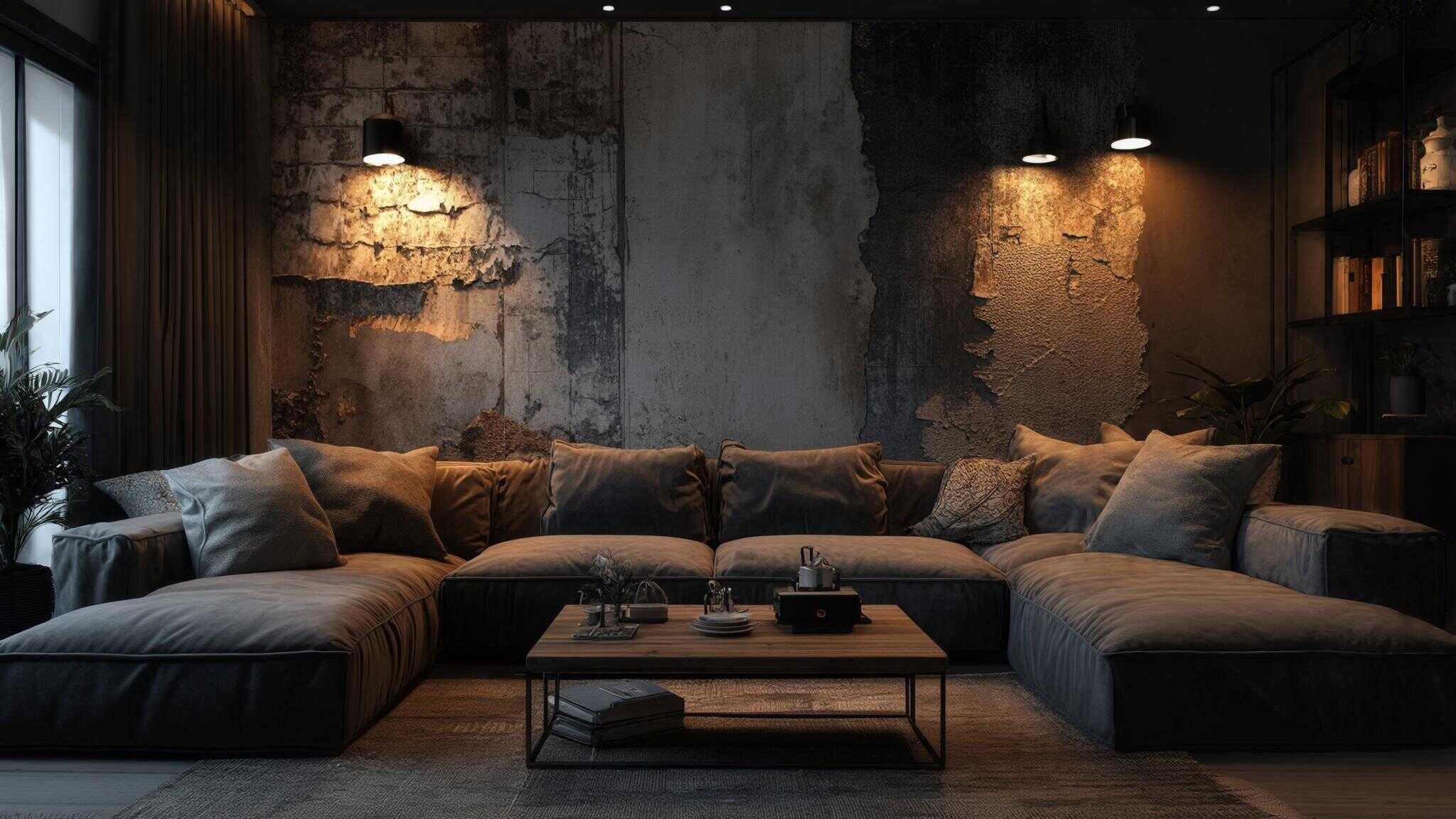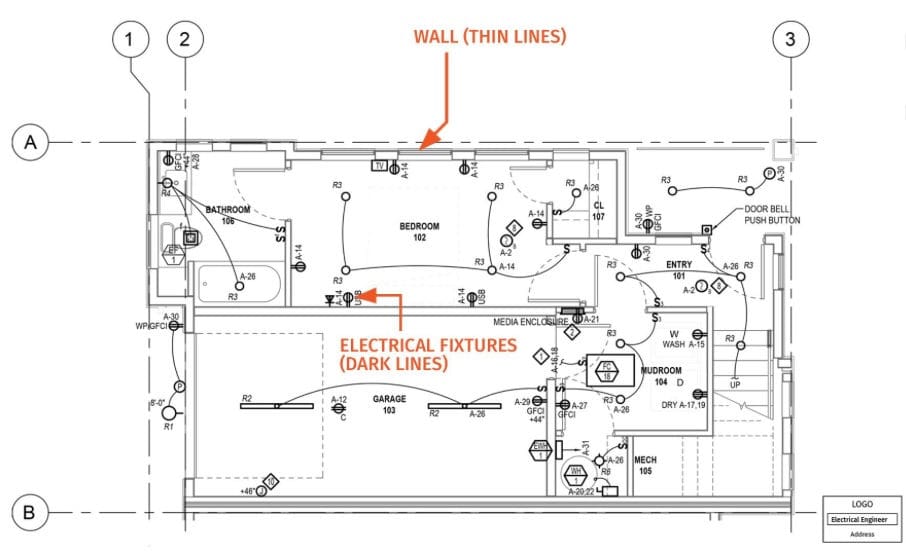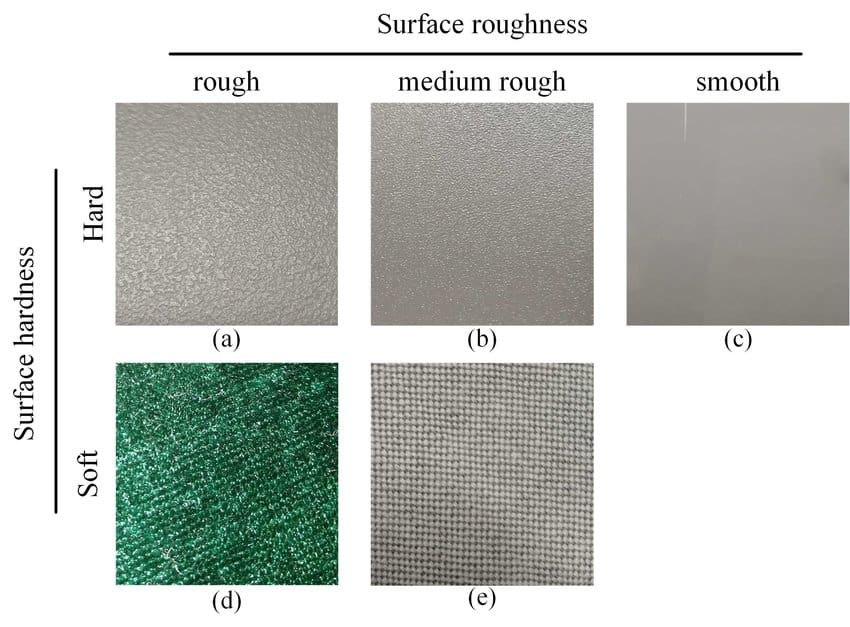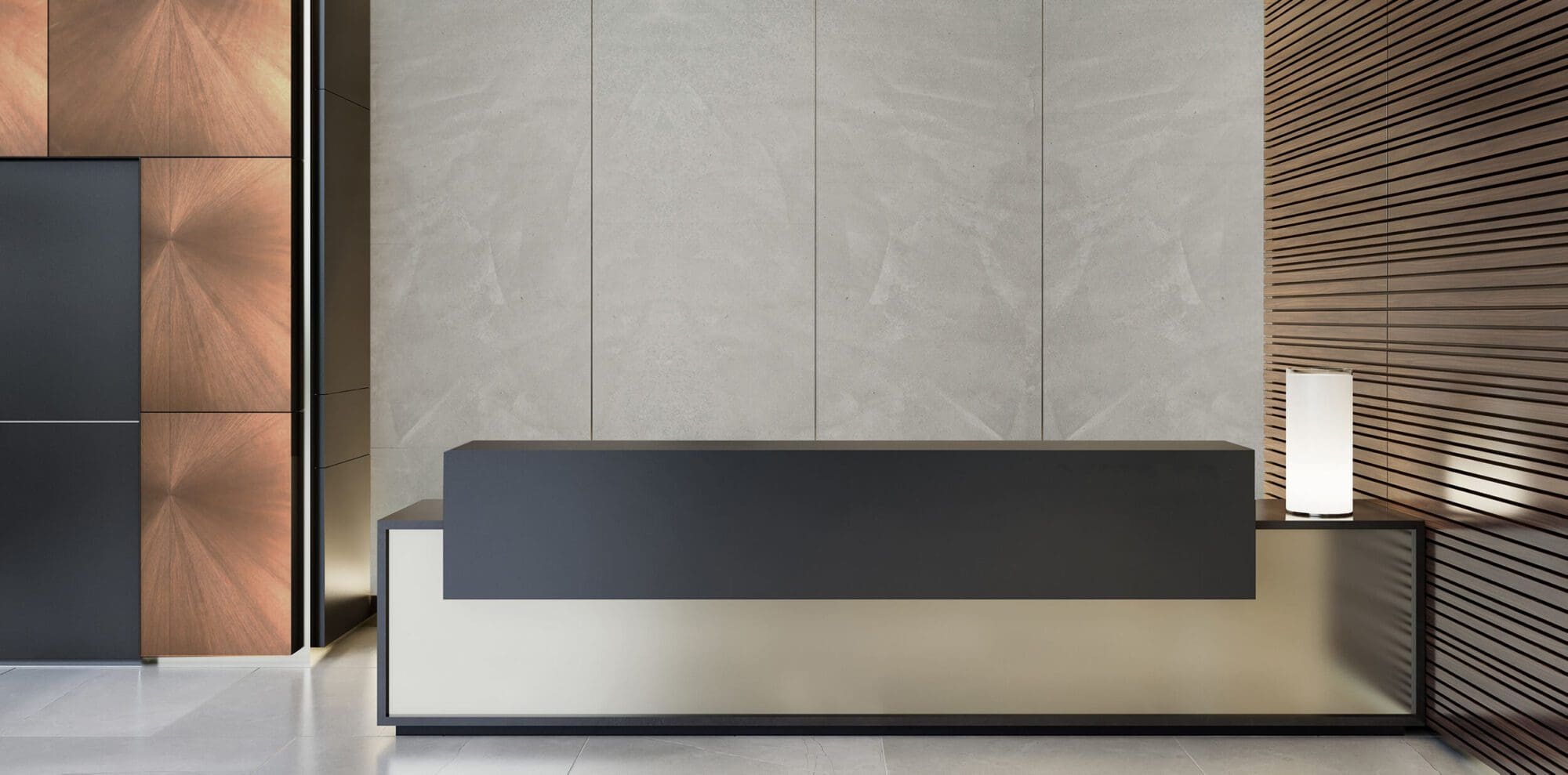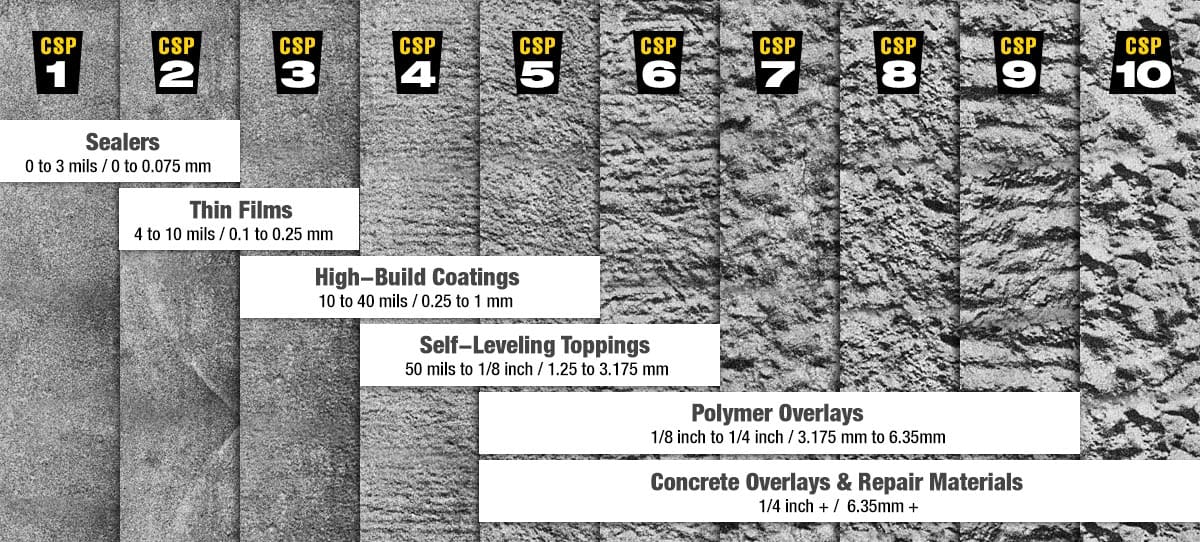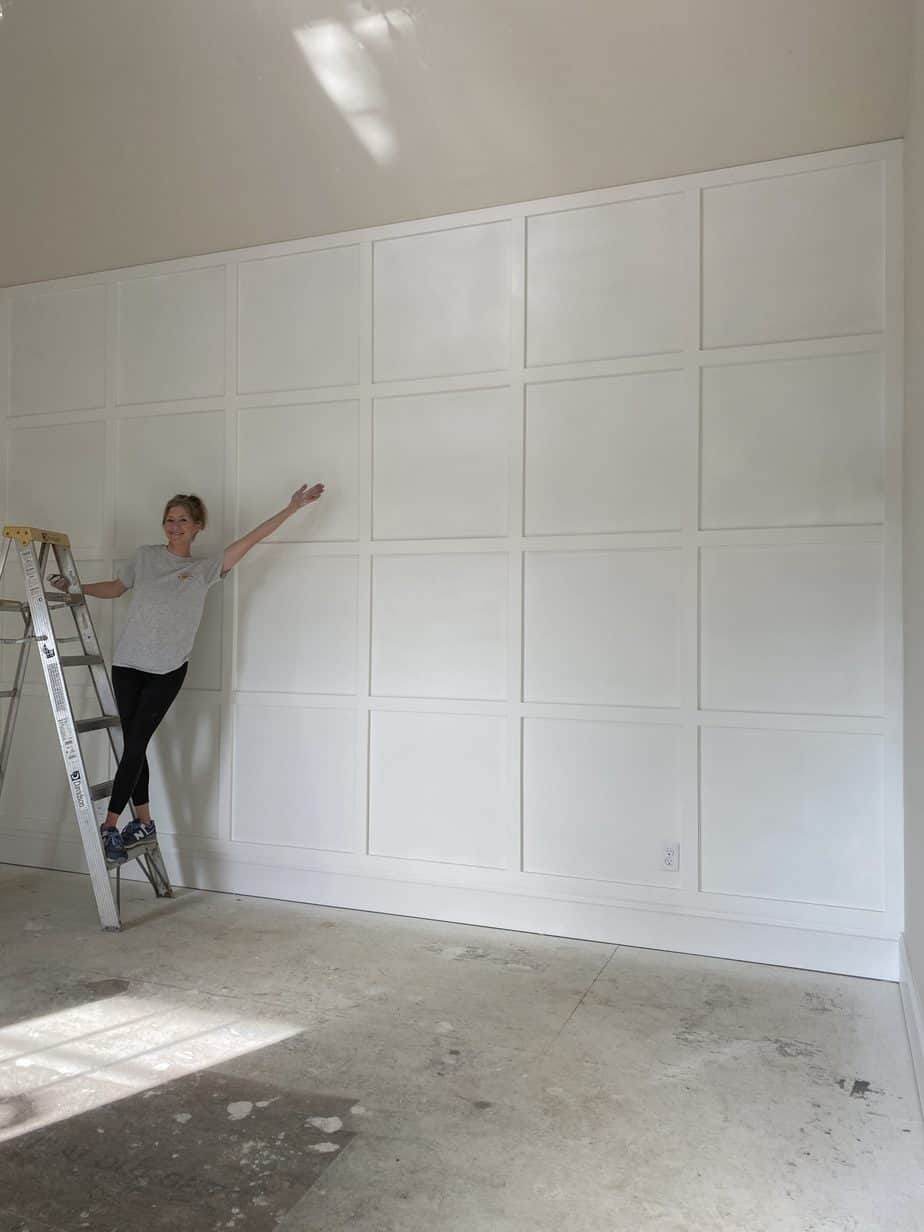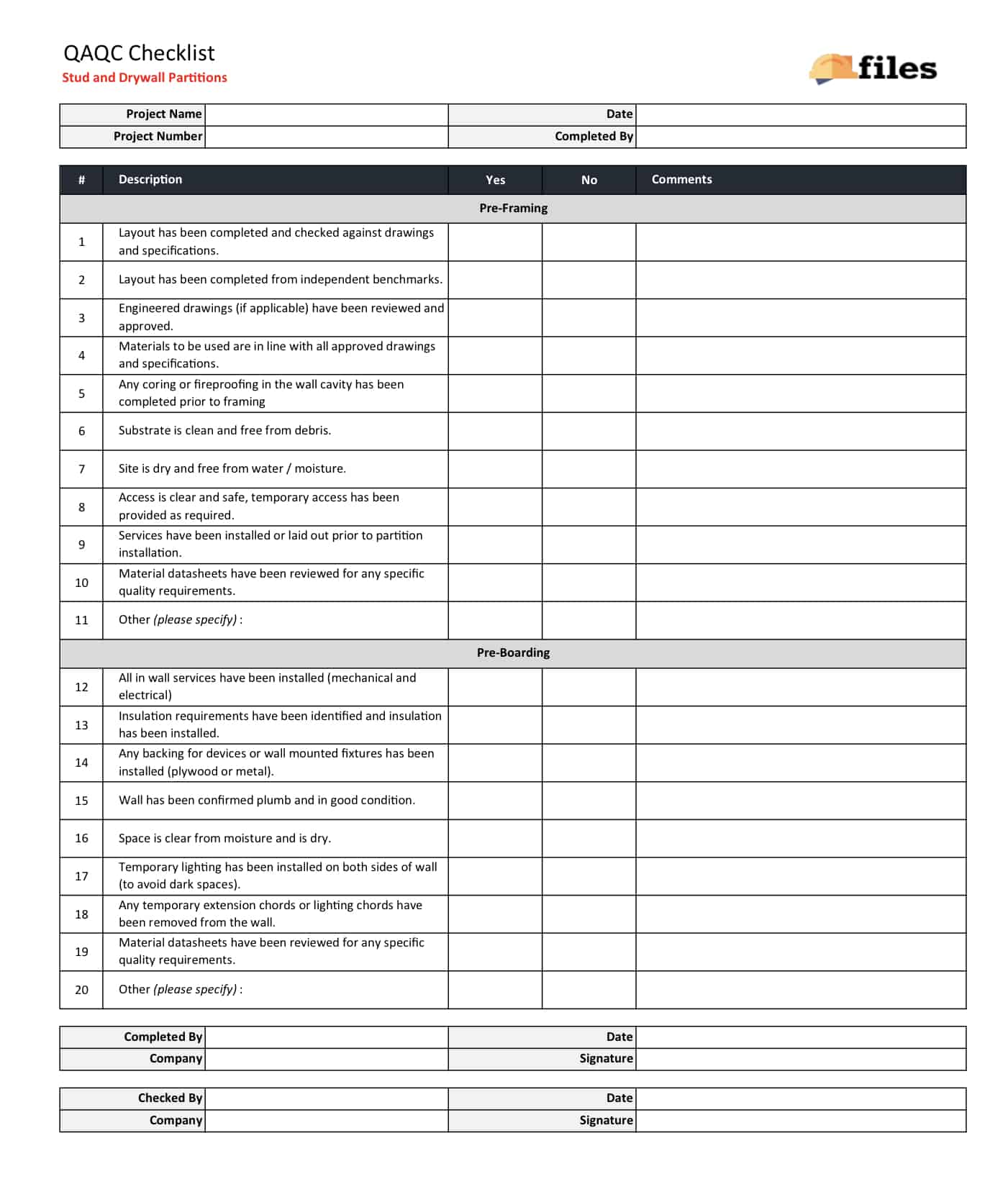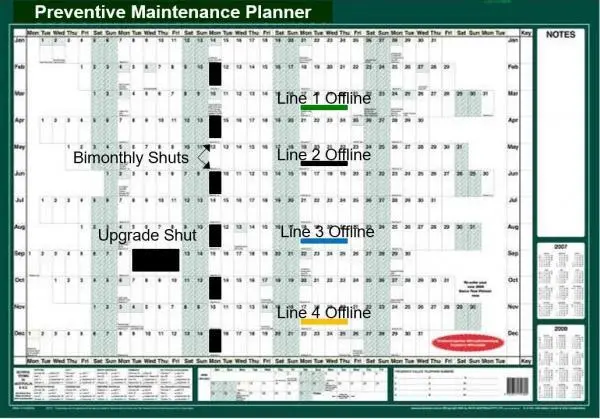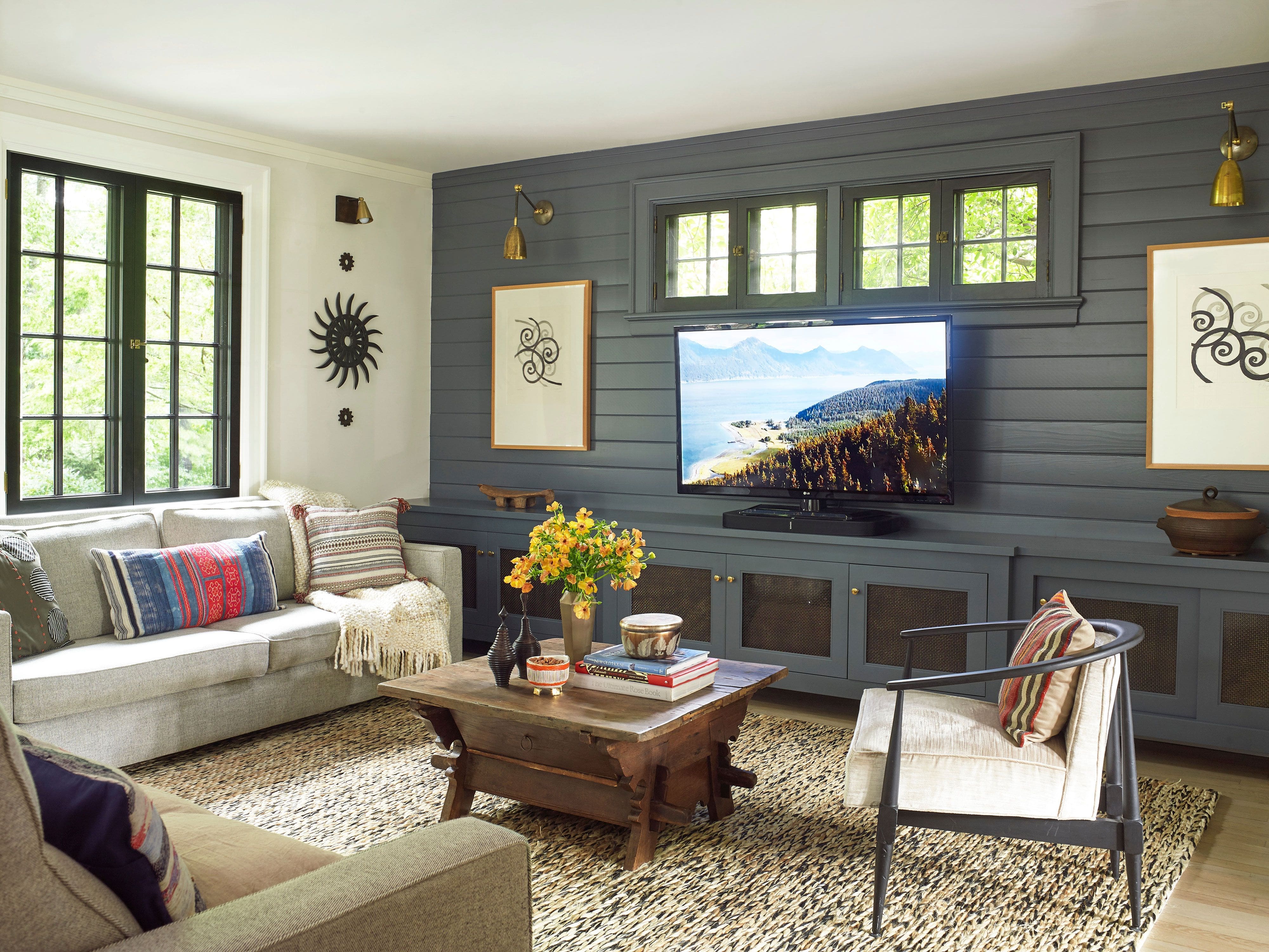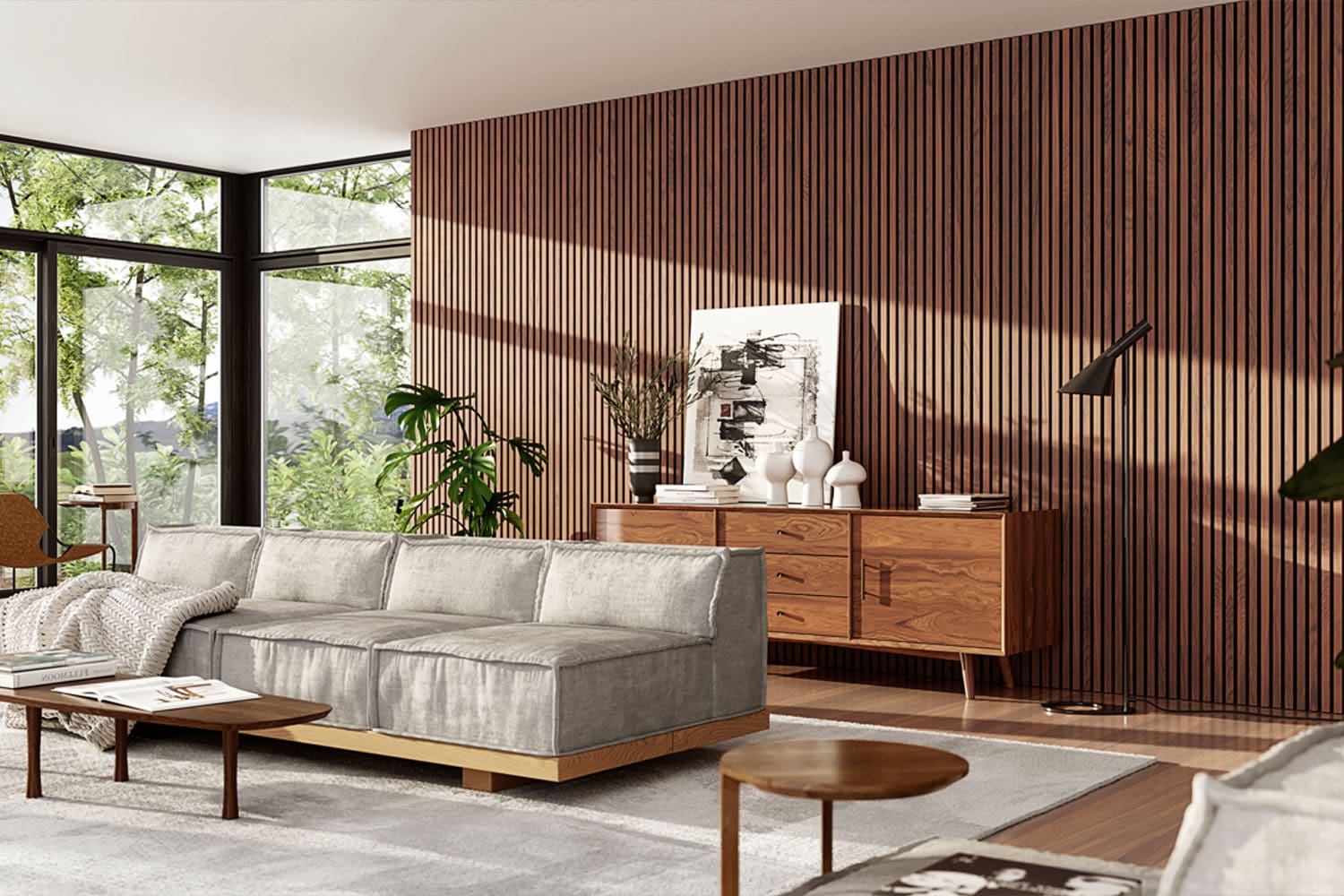DIY Accent Wall Secrets That Transform Rooms Into Personal Sanctuaries
The accent wall trend continues to evolve, with interior designers emphasizing the importance of intentional design choices. As noted in recent design coverage, “Accent walls will always be in style as long as it feels authentic to you and your design style” according to Architectural Digest. This comprehensive guide moves beyond basic installation to reveal the professional secrets that transform simple wall treatments into personal sanctuaries that enhance your daily life for years to come.
Table of Contents
- The Material Lifecycle Mindset
- The Psychological Space Design Framework
- The Integration Ecosystem Strategy
- The Execution Mastery Framework
- The Post-Installation Optimization Protocol
TL;DR
Most DIY accent wall failures happen because people focus only on installation instead of understanding how materials behave over time and interact with your home’s unique environment. Your accent wall creates a micro-climate that affects sound, light, and temperature – planning these interactions determines whether your space feels energizing or calming.
Professional-grade surface preparation and installation techniques prevent costly mistakes and ensure your DIY accent wall maintains its impact for years. Post-installation monitoring and maintenance routines keep your accent wall performing its intended function as your lifestyle evolves. Clearing visual clutter before installation creates the clean canvas essential for accent wall success.
The Material Lifecycle Mindset
Understanding how accent wall materials age and evolve prevents costly mistakes and ensures long-term satisfaction. This approach shifts focus from immediate visual impact to sustainable design decisions that accommodate your home’s changing conditions and your evolving preferences over time.
Materials respond differently to your home’s specific humidity levels, temperature fluctuations, and daily wear patterns – what works in a showroom may fail in your actual living environment. I’ve seen countless homeowners choose materials based solely on appearance, only to watch them deteriorate within months because they didn’t consider their home’s unique conditions.
Planning for material evolution means considering how colors fade, textures wear, and surfaces accumulate damage from normal household activities over a 5-10 year period. Your DIY accent wall needs to withstand everything from cooking steam to pet scratches, and different materials handle these challenges in vastly different ways.
Pre-Installation Material Psychology
Smart material selection requires understanding how different options will interact with your daily routines and home environment. This psychological approach to material choice prevents regret and ensures your DIY accent wall enhances rather than complicates your living experience.
Different materials create distinct emotional responses – smooth surfaces promote calm focus while textured materials encourage relaxation and intimacy. When I walk into a room with a sleek painted accent wall, my mind immediately shifts into work mode. But rough stone or reclaimed wood makes me want to curl up with a book.
Your material choice affects maintenance burden, with some options requiring weekly attention while others remain beautiful with minimal care. Consider how materials will look during different seasons when natural light changes and how they’ll appear under various artificial lighting conditions. That gorgeous deep blue paint might look stunning in summer sunlight but feel oppressive during winter’s shorter days.
| Material Type | Maintenance Frequency | Lifespan | Emotional Impact |
|---|---|---|---|
| Natural Wood | Monthly cleaning | 15-20 years | Warmth, grounding |
| Painted Surfaces | Annual touch-ups | 5-7 years | Clean, versatile |
| Stone/Brick | Quarterly sealing | 25+ years | Strength, permanence |
| Fabric Panels | Weekly dusting | 3-5 years | Softness, intimacy |
| Metal Accents | Bi-annual polishing | 10-15 years | Modern, industrial |
The 5-Year Vision Test
Before committing to any accent wall material, visualize how it will look and function after years of exposure to your home’s unique conditions. This forward-thinking approach prevents costly replacements and ensures lasting satisfaction with your design choice.
Humidity levels in bathrooms and kitchens cause certain materials to warp, peel, or develop mold issues that aren’t apparent during initial installation. I’ve watched beautiful wood installations turn into warped disasters because homeowners didn’t account for steam from daily showers.
High-traffic areas experience different wear patterns – materials that look perfect in bedrooms may show damage quickly in family rooms or hallways. Natural light exposure causes fading and color shifts in many materials, with south-facing walls experiencing the most dramatic changes over time.
Family activities and lifestyle changes affect how to make an accent wall that truly lasts. Homes with pets, children, or frequent entertaining need more durable options that can handle the chaos of daily life without losing their visual impact.
A homeowner installed beautiful reclaimed wood planks in their kitchen accent wall, drawn to the rustic charm. However, they failed to consider the kitchen’s high humidity and temperature fluctuations from cooking. Within 18 months, the wood developed warping and gaps, requiring complete replacement with moisture-resistant materials that could have been selected initially with proper lifecycle planning.
Material Memory Mapping
Creating detailed records of your material selection process ensures future repairs and modifications maintain design continuity. This documentation becomes invaluable when you need to match colors, textures, or installation methods years later.
Document specific product names, batch numbers, and purchase locations since manufacturers frequently discontinue or modify materials. I can’t tell you how many times I’ve helped homeowners search desperately for discontinued tile or paint colors because they didn’t keep proper records.
Record seasonal factors that influenced your choice, such as winter heating effects or summer humidity concerns, to guide future decisions. Note lifestyle considerations that drove material selection – these factors help maintain design coherence when making updates or repairs.
Include photos of the installation process and material samples to reference when sourcing matching elements for touch-ups or expansions. Trust me, your memory of that “perfect gray” will fade faster than you think.
Reversibility Planning
Designing your accent wall with removal in mind protects your investment and provides flexibility for future changes. This exit strategy approach uses installation methods that preserve underlying wall structure while allowing for easy updates.
Adhesive-based installations often damage drywall during removal, while mechanical fastening systems allow clean material changes without wall repair. Some installation methods create permanent alterations to electrical or plumbing systems that complicate future modifications.
Planning removal access points during installation makes future updates faster and less expensive. Choosing materials with resale value or donation potential reduces waste and provides financial return when making changes.
The Hidden Infrastructure Assessment
Evaluating unseen elements behind your chosen wall prevents installation problems and ensures long-term performance. This infrastructure analysis identifies potential conflicts with electrical, plumbing, or structural systems before they become expensive complications.
Hidden utilities often run through walls in unexpected patterns, and accent wall installation can interfere with future access or modifications. Structural considerations become critical with heavy materials that may exceed wall load capacity or require additional support systems. Existing wall conditions like moisture issues or settling cracks need resolution before DIY accent wall installation to prevent material failure.
Electrical Archaeology
Mapping existing electrical pathways and planning for future needs prevents costly mistakes during accent wall installation. This electrical assessment ensures your design enhances rather than complicates your home’s electrical functionality.
Outlet placement affects furniture arrangement and room functionality – accent walls often highlight awkward electrical positioning that wasn’t noticeable before. Future electrical needs like wall-mounted TVs, additional outlets, or smart home devices require planning during accent wall design phase.
Some accent materials interfere with electrical work, making future modifications expensive or impossible without material removal. Electrical code requirements may mandate specific clearances or access points that affect accent wall design and material choices.
Structural Load Conversations
Understanding how your wall participates in your home’s structural system prevents dangerous overloading and ensures proper support for heavy accent materials. This structural analysis protects both your investment and your family’s safety.
Load-bearing walls require professional evaluation before installing heavy materials like stone, tile, or thick wood panels. Non-load-bearing walls still have weight limits that vary based on construction methods and existing conditions.
Some accent materials require additional framing or support systems that affect installation complexity and cost. Structural modifications may require permits and professional installation, changing project scope and budget significantly.
The Psychological Space Design Framework
Accent walls fundamentally alter how occupants feel, move, and interact within spaces by changing visual processing patterns and emotional responses. This psychological approach to design creates intentional atmospheres that support specific activities and moods rather than simply adding visual interest.
Visual processing changes when accent walls redirect attention flow, affecting how quickly people feel comfortable or energized in spaces. Emotional responses to materials and colors influence stress levels, productivity, and social interaction patterns within rooms. Your DIY accent wall becomes a powerful tool for shaping daily experiences when you understand these psychological principles.
Cognitive Load Management
Designing accent walls that enhance rather than overwhelm the brain’s processing of visual information creates more comfortable and functional living spaces. This cognitive approach prevents visual fatigue while supporting the mental activities you want to encourage in each room.
Complex patterns or high-contrast designs increase mental processing demands, which can feel energizing in social spaces but exhausting in bedrooms. Strategic accent placement guides visual attention toward positive room elements while minimizing focus on problematic areas.
Color temperature and saturation levels affect concentration ability and emotional regulation throughout daily activities. The trend toward subtle, sophisticated accent walls reflects this cognitive understanding. As featured in recent HGTV coverage, “Joanna Gaines uses a muted color palette and varying textures to bring warmth and depth to the room without resorting to an exaggerated statement wall” House Digest reports, demonstrating how professional designers prioritize cognitive comfort over bold visual impact.
The Attention Direction Principle
Positioning and designing accent walls to guide focus toward positive room elements while drawing attention away from problematic areas creates more harmonious spaces. This attention management transforms how people experience and use rooms.
Accent walls naturally become focal points, so placement determines whether attention goes to attractive features or gets distracted by awkward corners or necessary but unsightly elements. Color intensity and texture complexity control how strongly accent walls pull focus – subtle variations guide attention gently while bold contrasts demand immediate notice.
Strategic accent placement can make rooms appear larger, cozier, or more balanced by directing eye movement in specific patterns. Lighting interaction with accent materials affects attention flow throughout different times of day and various activities.
Emotional Anchoring Through Texture
Selecting textures that create desired emotional atmospheres transforms how spaces feel and function for daily activities. This texture psychology approach matches surface qualities to the moods and behaviors you want to encourage in each room.
Smooth surfaces promote calm efficiency and focused work by reducing visual distractions and creating clean, organized feelings. Rough textures encourage cozy intimacy and relaxation by adding tactile interest and creating warmer, more inviting atmospheres.
Geometric patterns energize productivity and social interaction through visual rhythm and structured design elements. Natural textures like wood grain or stone patterns connect occupants to calming outdoor environments even in urban settings. When planning DIY accent wall ideas, consider how different textures will affect your daily mood and energy levels.
Micro-Climate Creation
Accent walls create distinct environmental zones within single rooms by affecting sound behavior, light interaction, and temperature perception. Understanding these micro-climate effects allows intentional atmosphere creation that supports specific activities and preferences.
Material choices influence acoustic properties, thermal comfort, and lighting quality in measurable ways that affect daily comfort. Strategic accent wall placement can create intimate conversation areas within larger rooms or energizing work zones within multipurpose spaces. Environmental zone creation helps optimize room functionality without requiring major renovations or furniture rearrangements.
Sound Behavior Modification
Choosing materials and installation methods that absorb, reflect, or diffuse sound creates acoustic environments that support your intended room usage. This sound design approach transforms how spaces feel and function for conversation, work, or relaxation.
Soft materials like fabric panels or cork absorb sound to create intimate, quiet environments perfect for bedrooms or reading areas. Hard surfaces like tile or metal reflect sound to create lively, energetic atmospheres that encourage social interaction and activity.
Textured materials diffuse sound waves to reduce echo and harsh reflections while maintaining room energy and liveliness. Installation methods affect acoustic performance – materials mounted with air gaps behind them provide different sound absorption than those applied directly to walls.
Light Interaction Choreography
Planning how accent walls interact with natural and artificial lighting throughout daily cycles creates dynamic visual experiences that enhance room functionality. This lighting choreography approach ensures accent walls perform beautifully under all conditions.
Natural light changes throughout seasons and daily cycles affect how accent wall colors and textures appear, requiring consideration of year-round performance. Artificial lighting placement and color temperature interact with accent materials to create different moods for evening activities versus daytime use.
Reflective materials can brighten dark rooms by bouncing light around spaces, while matte surfaces absorb light to create cozy, intimate feelings. Direct illumination versus reflected light patterns create different visual effects on textured surfaces, affecting how dramatic or subtle accent walls appear.
Temperature Personality Development
Selecting materials that influence perceived temperature through thermal properties and visual associations creates more comfortable and inviting spaces. This temperature psychology approach affects both actual comfort and emotional responses to rooms.
Materials with actual thermal mass like stone or brick absorb and release heat to moderate room temperature fluctuations naturally. Visual temperature associations make rooms feel warmer or cooler regardless of actual temperature – warm colors and natural materials create cozy feelings while cool colors and smooth surfaces feel refreshing.
Texture affects perceived temperature through tactile associations – rough, natural textures feel warmer while smooth, manufactured surfaces feel cooler. Strategic material selection can balance rooms that receive too much or too little natural heat from sun exposure or HVAC systems.
The Integration Ecosystem Strategy
Moving beyond isolated accent walls to understanding them as interconnected elements within your home’s overall design and functional systems creates cohesive, sophisticated living environments. This ecosystem approach ensures accent walls enhance rather than conflict with your home’s existing character and flow.
Accent walls affect how adjacent spaces feel and function through visual connections and material relationships that extend beyond single rooms. Integration planning prevents design conflicts while creating opportunities for sophisticated material dialogues between spaces. Your DIY accent wall becomes part of a larger design conversation when you consider these broader connections.
Cross-Room Conversation Planning
Designing accent walls that communicate effectively with adjacent spaces and overall home flow creates visual narratives that enhance your home’s character. This conversation approach ensures DIY accent wall projects contribute to rather than disrupt your home’s existing design story.
Sightlines between rooms mean accent walls are often visible from multiple vantage points, requiring consideration of how they appear from hallways, doorways, and adjacent spaces. Material relationships between rooms create sophisticated design connections without requiring exact matching or repetitive patterns.
Color and texture conversations between spaces build visual flow that makes homes feel larger and more cohesive. The emerging bas-relief trend exemplifies this integration approach. As interior design experts note, “The wall becomes a feature rather than a backdrop” according to Living Etc, demonstrating how modern accent walls serve as architectural elements that enhance entire home environments rather than isolated decorative features.
Sightline Storytelling
Planning how to make an accent wall that appears beautifully from other rooms, hallways, and entryways ensures they enhance rather than conflict with your home’s visual narrative. This sightline strategy creates intentional design experiences that guide movement and attention throughout your home.
Open floor plans mean accent walls are visible from multiple rooms simultaneously, requiring design choices that work from various viewing angles and distances. Hallway views of accent walls create first impressions and transition experiences that affect how people feel entering different spaces.
Doorway framing effects change how accent walls appear – materials and colors that look perfect from within rooms may clash when viewed through architectural openings. Furniture placement in adjacent rooms affects accent wall visibility and impact, requiring coordination between room layouts and wall design.
In an open-concept home, a homeowner installed a bold geometric accent wall in their dining area without considering its visibility from the kitchen and living room. The strong pattern created visual chaos when viewed from the kitchen workspace and competed with the living room’s focal fireplace. A redesign using a subtle textured material in a coordinating color created sophisticated visual flow between all three spaces while maintaining the desired accent impact.
Material Echo Systems
Creating subtle connections between accent wall materials and elements in other rooms builds sophisticated design dialogues without exact matching. This echo approach develops visual relationships that enhance your home’s overall character and flow.
Repeating material families rather than exact matches creates sophisticated connections – using different wood species or stone types that share similar characteristics. Color temperature consistency between spaces maintains visual flow while allowing for different intensities and saturations in various rooms.
Texture relationships build tactile connections – pairing smooth accent walls in active spaces with rough textures in relaxation areas creates intentional contrast. Scale variations of similar patterns or motifs create visual rhythm throughout homes without repetitive or boring design schemes.
Lifestyle Evolution Accommodation
Building flexibility into accent wall design accommodates changing needs, preferences, and life circumstances without requiring complete reinstallation. This evolution approach protects your investment while allowing for natural design growth and adaptation.
Modular design elements allow for updates and changes without major renovation projects or significant expense. Flexible installation methods accommodate lifestyle changes like growing families, aging in place, or shifting work-from-home needs. Future-proofing considerations ensure DIY accent wall installations remain relevant and functional as technology and living patterns evolve.
Modular Thinking Application
Designing accent walls with interchangeable elements or adaptable sections enables updates without complete reinstallation as style preferences or functional needs evolve. This modular approach maximizes long-term value and design flexibility.
Panel systems allow for individual section replacement or rearrangement without affecting entire accent walls, reducing update costs and complexity. Interchangeable elements like removable art panels, fabric inserts, or modular shelving create seasonal or mood-based design changes.
Standardized mounting systems accommodate different materials over time – the same framework can support wood panels initially and metal sheets later. Scalable designs allow for expansion or reduction of accent wall coverage as room usage or furniture arrangements change.
| Project Phase | Timeline | Key Decisions | Flexibility Options |
|---|---|---|---|
| Planning | Week 1-2 | Material selection, layout design | Modular vs. permanent installation |
| Preparation | Week 3 | Surface prep, infrastructure assessment | Reversible mounting systems |
| Installation | Week 4-5 | Professional vs. DIY execution | Staged implementation |
| Optimization | Ongoing | Performance monitoring, adjustments | Seasonal updates, material swaps |
The Execution Mastery Framework
Transforming conceptual accent wall planning into precise physical reality requires professional-grade techniques that ensure lasting quality and visual impact. This execution approach prevents common DIY mistakes while achieving results that rival professional installations.
Advanced surface preparation techniques create ideal foundations that determine long-term success regardless of chosen accent materials. Professional installation methods ensure structural integrity and visual perfection that maintains impact over time. Your DIY accent wall project deserves the same attention to detail that professionals bring to their work.
Surface Preparation Alchemy
Moving beyond basic wall prep to create ideal foundations determines long-term success regardless of chosen accent materials. This preparation mastery prevents adhesion failures, uneven surfaces, and premature material degradation.
Primer selection based on specific material adhesion needs and expansion characteristics ensures proper bonding and prevents future failures. Micro-texture creation enhances material adhesion and visual depth, particularly crucial for smooth materials that require mechanical bonding. Moisture control systems prevent material failure from humidity cycling in bathrooms, kitchens, or basement areas.
Primer Personality Matching
Selecting primers based on accent material’s specific adhesion needs and expansion characteristics rather than just color blocking ensures proper chemical bonding and prevents future failures. This primer science approach treats different materials as unique bonding challenges.
Different materials require specific primer chemistry – vinyl needs flexible bonding agents while metal requires corrosion-resistant formulations. Expansion and contraction rates between primers and accent materials must match to prevent cracking or separation during temperature changes.
Moisture-blocking primers prevent humidity-related failures in bathrooms and kitchens where standard primers would allow material degradation. Surface porosity affects primer penetration and bonding strength, requiring different application techniques for drywall versus plaster or concrete.
Micro-Texture Creation
Deliberately creating subtle surface variations enhances material adhesion and visual depth, especially crucial for smooth materials that rely on mechanical bonding rather than chemical adhesion. This texture technique improves both performance and appearance.
Light sanding creates microscopic surface irregularities that improve adhesive bonding for vinyl, metal, and laminate materials. Texture additives in primer coats provide mechanical bonding surfaces while maintaining smooth appearance for paint or thin materials.
Strategic texture patterns can hide minor wall imperfections while enhancing accent material appearance and longevity. Different texture techniques suit different materials – crosshatch patterns work well for tiles while circular patterns enhance wood panel adhesion.
Moisture Migration Control
Installing vapor barriers or moisture-wicking systems behind accent walls in high-humidity areas prevents material failure from moisture cycling. This moisture management approach protects investments in bathrooms, kitchens, and basement installations.
Vapor barriers prevent moisture from reaching accent materials from behind walls, particularly important in exterior wall applications. Moisture-wicking systems actively remove humidity buildup behind accent walls to prevent mold growth and material degradation.
Ventilation gaps behind certain materials allow air circulation that prevents moisture accumulation while maintaining insulation properties. Sealant selection and application techniques create moisture barriers at edges and joints where water infiltration commonly occurs.
Installation Precision Protocols
Professional-grade techniques for achieving flawless accent wall installation maintain structural integrity and visual perfection over time. These precision methods prevent common alignment issues, material damage, and installation failures.
Reference grid systems ensure perfect material placement even when working alone or in challenging lighting conditions. Expansion joint integration accommodates seasonal building movement to prevent cracks or separations in rigid materials. Tool calibration ensures consistent results throughout installation processes, particularly critical for pattern-based materials.
Reference Grid Establishment
Creating invisible alignment systems using laser levels and chalk lines ensures perfect material placement even when working alone or in challenging lighting conditions. This grid system prevents cumulative errors that create noticeable installation flaws.
Laser level systems create perfectly straight reference lines that remain visible throughout installation processes, preventing drift and alignment errors. Chalk line grids provide backup reference points when laser systems aren’t practical or when working around obstacles.
Measurement verification systems catch errors before they compound – checking alignment every few pieces prevents major corrections later. Grid systems accommodate irregular wall surfaces by providing consistent reference points that compensate for minor wall variations.
Expansion Joint Integration
Building controlled flexibility points into DIY accent wall installations accommodates seasonal building movement and prevents cracks or separations in rigid materials. This expansion planning protects installations from structural stress damage.
Seasonal building movement affects all structures, and rigid accent materials need flexibility points to prevent stress cracking. Expansion joint placement at corners, ceiling lines, and material transitions allows movement without visible damage.
Flexible sealants and trim pieces accommodate movement while maintaining clean visual lines and weather sealing. Different materials expand at different rates, requiring specific joint spacing and flexibility allowances based on material properties.
Tool Calibration Rituals
Developing systematic approaches to tool setup and maintenance ensures consistent results throughout installation processes, especially critical for pattern-based materials requiring precise cuts and placement. This calibration discipline prevents quality degradation during long projects.
Cutting tool calibration ensures consistent dimensions and clean edges throughout material installation, preventing fit issues and visual inconsistencies. Measurement tool verification prevents cumulative errors that create noticeable alignment problems in pattern-based installations.
Power tool maintenance schedules ensure consistent performance and prevent material damage from worn or improperly functioning equipment. Setup routines establish consistent work conditions that reduce variables affecting installation quality and speed.
Quality Assurance Verification
Professional inspection techniques adapted for DIY use catch and correct issues before they become permanent problems. This quality control approach ensures installations meet professional standards while preventing costly corrections later.
Progressive installation testing allows technique refinement and issue identification before committing to full wall coverage. Stress point identification helps recognize areas requiring reinforcement during installation rather than after problems develop.
Progressive Reveal Testing
Installing accent materials in strategic test sections first allows technique refinement and potential issue identification before committing to full wall coverage. This testing approach prevents large-scale mistakes while building installation confidence.
Test sections reveal how materials behave during installation and help identify technique adjustments needed for optimal results. Color and pattern matching verification in test areas prevents costly material waste from ordering or cutting errors.
Installation timing estimates from test sections help plan project schedules and identify potential complications before they affect entire installations. Tool and technique optimization during test phases improves efficiency and quality for remaining installation work.
A homeowner planning a complex herringbone wood panel accent wall installed a 2×2 foot test section first. The test revealed that their chosen adhesive wasn’t providing adequate hold for the angled cuts, and the pattern looked too busy at close viewing distance. These discoveries led to switching to mechanical fasteners and adjusting the pattern scale, preventing a costly full-wall mistake.
Stress Point Identification
Learning to recognize areas where accent materials will experience the most wear, temperature fluctuation, or structural stress allows reinforcement during installation rather than repair after problems develop. This stress analysis prevents premature failure.
High-traffic areas near doorways and furniture require additional adhesive or mechanical fastening to prevent material loosening. Temperature fluctuation zones near heating vents or exterior walls need expansion accommodation and stronger bonding systems.
Moisture exposure areas require enhanced sealing and moisture-resistant installation methods to prevent material degradation. Impact zones where furniture or daily activities might contact accent walls need protective measures or more durable material choices.
The Post-Installation Optimization Protocol
The often-overlooked phase of fine-tuning and maintaining accent walls ensures continued performance of intended functions over time. This optimization approach treats accent walls as dynamic elements requiring attention rather than static decorative features.
Performance monitoring systems track how well accent walls meet intended goals and identify optimization opportunities. Maintenance routines preserve DIY accent wall impact while preventing degradation that reduces effectiveness and visual appeal.
Performance Monitoring Systems
Establishing routines and methods for tracking how well accent walls meet intended goals identifies optimization opportunities and prevents small issues from becoming major problems. This monitoring approach treats DIY accent wall installations as functional elements requiring ongoing evaluation.
Seasonal behavior documentation tracks performance changes across different environmental conditions and usage patterns. Inhabitant feedback integration ensures accent walls continue meeting user needs as preferences and lifestyles evolve. Regular assessment routines catch maintenance needs before they affect appearance or function.
Seasonal Behavior Documentation
Tracking how accent walls perform differently across seasons helps identify patterns in appearance changes, material behavior, and usage shifts that inform maintenance and optimization decisions. This seasonal awareness prevents surprise problems and guides improvement planning.
Lighting changes throughout seasons affect accent wall appearance and room functionality, requiring documentation of optimal artificial lighting adjustments. Humidity fluctuations cause material expansion, contraction, and potential degradation that varies predictably with seasonal patterns.
Usage pattern shifts during different seasons reveal how accent walls support or hinder changing lifestyle needs and preferences. Temperature variations affect both material performance and occupant comfort, providing data for optimization decisions.
Inhabitant Feedback Integration
Creating systems for gathering and acting on feedback from everyone who regularly uses spaces ensures accent walls continue serving their intended purposes as needs and preferences evolve. This feedback approach treats accent walls as user experience elements.
Different users experience accent walls differently based on height, age, and personal preferences, requiring inclusive feedback collection methods. Regular feedback sessions reveal how accent walls affect daily routines, mood, and space usage in ways that weren’t anticipated during planning.
Feedback integration systems help prioritize optimization efforts and guide future accent wall projects based on real usage data. User preference evolution over time provides insights into design longevity and adaptation needs for maintaining satisfaction.
Maintenance Choreography
Developing cleaning, care, and refresh routines preserves accent wall impact while preventing degradation that reduces effectiveness and visual appeal. This maintenance approach treats different materials as requiring specific care protocols.
Protective intervention timing prevents minor issues from becoming expensive problems requiring major repairs or replacement. Material-specific maintenance schedules optimize care efforts while preventing over-maintenance that can damage surfaces.
Protective Intervention Timing
Learning to recognize early signs that accent walls need attention before problems become visible or expensive to address protects investments and maintains visual impact. This intervention approach treats maintenance as prevention rather than reaction.
Early warning signs like minor color changes, texture variations, or adhesion issues indicate developing problems that are easily corrected with prompt attention. Seasonal maintenance timing takes advantage of optimal weather conditions and usage patterns for efficient care and repair work.
Preventive treatments applied before problems develop cost significantly less than corrective measures after damage becomes visible. Documentation of intervention timing helps establish optimal maintenance schedules based on actual performance rather than manufacturer recommendations alone.
Before we wrap up, many successful accent wall projects start with proper space preparation. Jiffy Junk’s comprehensive clearing services create the clean canvas essential for accurate design assessment and flawless installation. Their same-day service means you can eliminate visual distractions and begin your accent wall project while motivation and vision remain sharp.
When planning your accent wall transformation, consider how existing clutter and unnecessary items might interfere with both the installation process and final visual impact. Jiffy Junk’s environmentally responsible approach ensures your unwanted items find new life through donation and recycling while you gain the clear space needed for confident design decisions.
When planning your DIY accent wall project, consider how furniture removal vs donation decisions can impact your space clearing before installation begins.
Before creating your focal point, ensure the space is properly prepared by addressing any clutter removal that might compete with your accent wall’s visual impact.
When planning sightlines, consider how old furniture disposal can open up visual pathways and improve the overall impact of your accent wall design.
Before beginning surface preparation, ensure your workspace is clear by addressing any necessary garage clean out services if your project involves staging materials in adjacent spaces.
When planning maintenance schedules, consider how seasonal decluttering guide practices can help maintain the visual clarity your accent wall needs to remain impactful.
For comprehensive space preparation, explore house cleaning checklist strategies that complement your accent wall project planning.
Final Thoughts
Your accent wall journey extends far beyond choosing colors and hanging materials on walls. Success comes from understanding how materials age, how spaces affect emotions, and how installations integrate with your home’s existing systems. This comprehensive approach prevents costly mistakes while creating accent walls that enhance your daily life for years.
Professional-grade techniques and systematic planning transform DIY accent wall projects into lasting investments that rival contractor work. The key lies in treating accent walls as functional elements that require ongoing attention rather than decorative features you install and forget.
Material lifecycle planning and psychological space design create DIY accent wall installations that support your lifestyle rather than just adding visual interest. Professional execution techniques and post-installation optimization ensure your investment maintains its impact and functionality over time. Integration with your home’s existing systems and future flexibility planning protect your investment while accommodating natural lifestyle evolution.
When considering DIY accent wall ideas, remember that the most successful projects balance immediate visual impact with long-term performance and adaptability.
Pre-Installation Readiness Checklist
- Document all electrical outlet locations and planned future needs
- Test wall for load-bearing capacity if using heavy materials
- Measure and record humidity levels in target room across one week
- Photograph wall from multiple angles and lighting conditions
- Research material batch numbers and availability for future matching
- Plan removal strategy and document for future reference
- Clear 6-foot radius around work area of all furniture and decor
- Verify HVAC vent locations won’t conflict with material placement
- Test primer compatibility with chosen accent material
- Schedule installation during optimal weather/humidity conditions
A couple transformed their bedroom with a fabric panel accent wall system, choosing removable panels mounted on a track system. When they relocated two years later, they easily removed all panels without wall damage, took them to their new home, and reconfigured them for a different wall size. The modular approach protected their $800 investment while adapting to their lifestyle change.
